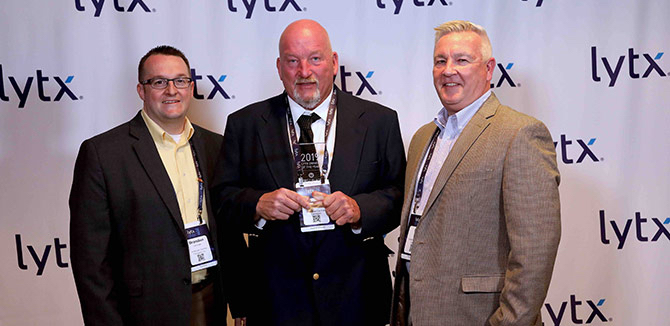The trucking industry is short about 51,000 drivers, and the shortage is only expected to grow in the future. It’s depleted the pool of available driver talent for everyone, but one trucking fleet is doing something about it.
Last fall, Kansas City, Mo-based American Central Transport (ACT) launched an innovative new driver training program to develop new drivers’ skills. The program is called TrACTion, a clever play on the company’s name. Though its primary aim is to gain drivers for the long haul, it’s also a vital part of the company’s long-term fleet risk management strategy.
“The goal is to offer a customized, hands-on program for new drivers so they can gain traction at ACT and establish a long-term career with us,” said Brandon Leininger, ACT’s director of risk management. “With the truck driver shortage, we felt that we needed to do our part to get experienced drivers back in the driver’s seat. This program empowers us to immerse our new drivers in the company culture from the get-go.”
How risk management training works
To enroll drivers in the training program, ACT partnered with local trucking schools. To be eligible, drivers must be fresh out of trucking school or have less than a year of professional driving experience.
When an inexperienced driver comes aboard, ACT trainers assess the driver’s comfort level with trucking equipment. Depending on their experience, drivers undergo four or six weeks of supervised training that includes education on and off the road. It’s ACT’s way of ensuring that new drivers match the company culture and can safely operate their equipment, which contributes to the company’s risk management solutions.
Trainees get matched with a different trainer every two weeks for a deeper, more diverse experience. For an extra layer of risk management training, ACT also matches trainees with “driver training specialists,” who mentor the new recruits. The specialists are veteran ACT drivers with unique backgrounds (such as a psychology degree) for making interesting behavioral insights. Mentors serve as one more avenue for developing the inexperienced drivers, motivating them to reach the next level of professionalism. That includes operating truck equipment safely.
Recruiting safety-minded drivers open to risk management training
“We aim to bring on new drivers who have an open mind, appreciate the value of safety technology, and are eager to grow in the job,” said ACT President and COO Phil Wilt. “TrACTion gives us an opportunity to shape and mold new drivers to our values and our culture.”
Drivers new to trucking don’t have any preconceived notions about video telematics or in-cab technologies, Wilt said. So they don’t resist it like experienced drivers might. “We’ve found that new drivers who undergo our risk management training are very open to safety technologies such as the Lytx® Driver Safety Program and understand that the technology is there to protect them and help them develop,” he said.
Video-based coaching a central risk management solution
During risk management training, trainers ride up front with trainees, watching for erratic behaviors or unsafe habits. With a trainer beside them, many trainees don’t trigger the DriveCam® Event Recorder at all. When they do trigger the event recorder, trainees are coached by an ACT driver coach and discuss ways to avoid similar situations in the future.
“The Lytx Driver Safety Program, with both inward- and outward-facing lenses, allows us to root out unsafe behaviors at every level of our organization, whether it’s new drivers or those who have been in the job for 20 years,” Leininger said. “By identifying and correcting unsafe habits at the trainee level specifically, we’re helping our new drivers become safety all-stars very early in their careers.”
With the Lytx program in its toolbox, ACT, as part of its continuous improvement efforts, strives to coach up driver trainees to further develop them professionally. “In nurturing inexperienced drivers and developing their skills, we’re enhancing the talent level at ACT now and for years to come. That means that the driver shortage may one day be a thing of the past for ACT.”
Most gratifying is seeing new drivers go through the risk management training and emerge talented, conscientious drivers, Leininger said. So far, 12 have graduated from TrACTion, including a couple who team drives.
“They graduated from the six-week program, now they’re immersed in the fleet and successful for us,” Leininger said. “Another driver ran really strong over 10,000 miles. She really works. These are the kinds of things that make this program so worthwhile.”
Both Leininger and Wilt believe the risk management training program will have long-term benefits for ACT. “We’re investing more time and energy in these drivers than the average driver who walks through our door, but by cultivating drivers from the ground up, we’re seeing results,” Wilt said.
For additional innovative risk management ideas, check out the Lytx Resource Hub.
